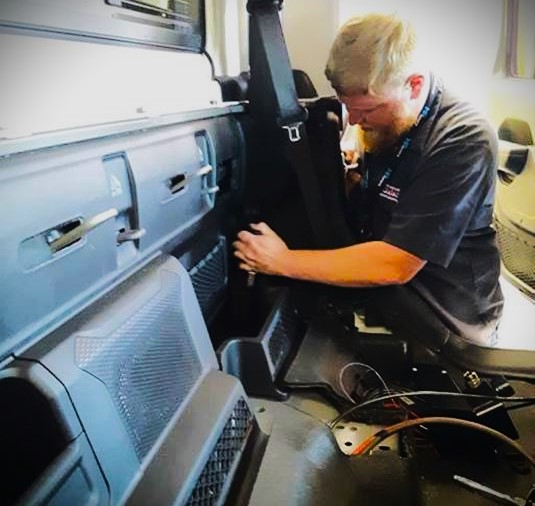I often get compliments on my ham radio mobile install, which I wrote about last month. The compliments are usually a segue into a conversation about amateur radio mobile radio installations. Far too many people I talk to are asking about “WHO” they can hire to do their mobile install. Let me be clear about this: In most cases, YOU are the best WHO!
You know your vehicle. You know your radio equipment. You know your operating style. Therefore, you are the best candidate to put that all together into a personalized mobile install.
In this article, we’ll be highlighting a few common errors people make. My hope is that you will take this to heart and avoid these mistakes. I like to think that there are no bad installs—only good installs and better installs. In the end, you are the craftsman. Take pride in your work and, most importantly, USE IT to get on the air.
I read somewhere, “The marvelous thing about lack of planning is that failure comes as a complete and utter surprise.” The planning phase should be the longest phase of the mobile install process. This is where you decide where everything should go, where the wiring will run, if you have all of the supplies and tools necessary, and whether or not you have adequately researched the best practices for each step in the install process.
Beyond taking the time to properly plan your mobile installation, here are three steps to make sure your project goes smoothly:
1. Take Note of What You Can’t See.
Always look behind trim pieces or body panels before drilling. I have known people who have drilled into airbag curtains, wiring harnesses, spare tires, and dash screens—very costly but avoidable mistakes. Just because a component looks good does not mean it should be in a particular spot. Trim and body panel tools are inexpensive and will allow you to look in those hidden spaces.

2. Buy Quality.
If you are taking the time and effort to do a top-notch install, use quality equipment and parts. You can do the best install you have ever seen, but it can be useless if you cut corners buying substandard components, such as non-shielded cable and connectors. In the planning phase, be sure to count the costs and budget for high-performance components to complement your quality workmanship.
If you can’t find the exact component you want, fabricate it yourself. One of the biggest takeaways from my time on the farm was the “just make it” mentality. If you can’t find the exact bracket or support you need, it can probably be easily fabricated from flat stock available at your local big box or farm supply store. Then it will fit just the way you want.
3. Always Test Before You Install.
Hams are great at repurposing stuff. We will store items on a shelf for years until an idea strikes and we say, “I could use that thing I put on the shelf 12 years ago!” That’s a great idea, and I’m sure your significant other would love for that abandoned part to be removed from the basement. But be sure to bench test it completely before you install it. On more than one occasion I pulled something off the shelf, applied power, and out came the magic smoke! Mysterious things can happen to sitting electronics.
***
I have shared some of the pitfalls that I have either experienced or heard about. Now avoid them and build your mobile shack. I can’t wait to see some new install pictures appearing on social media.

